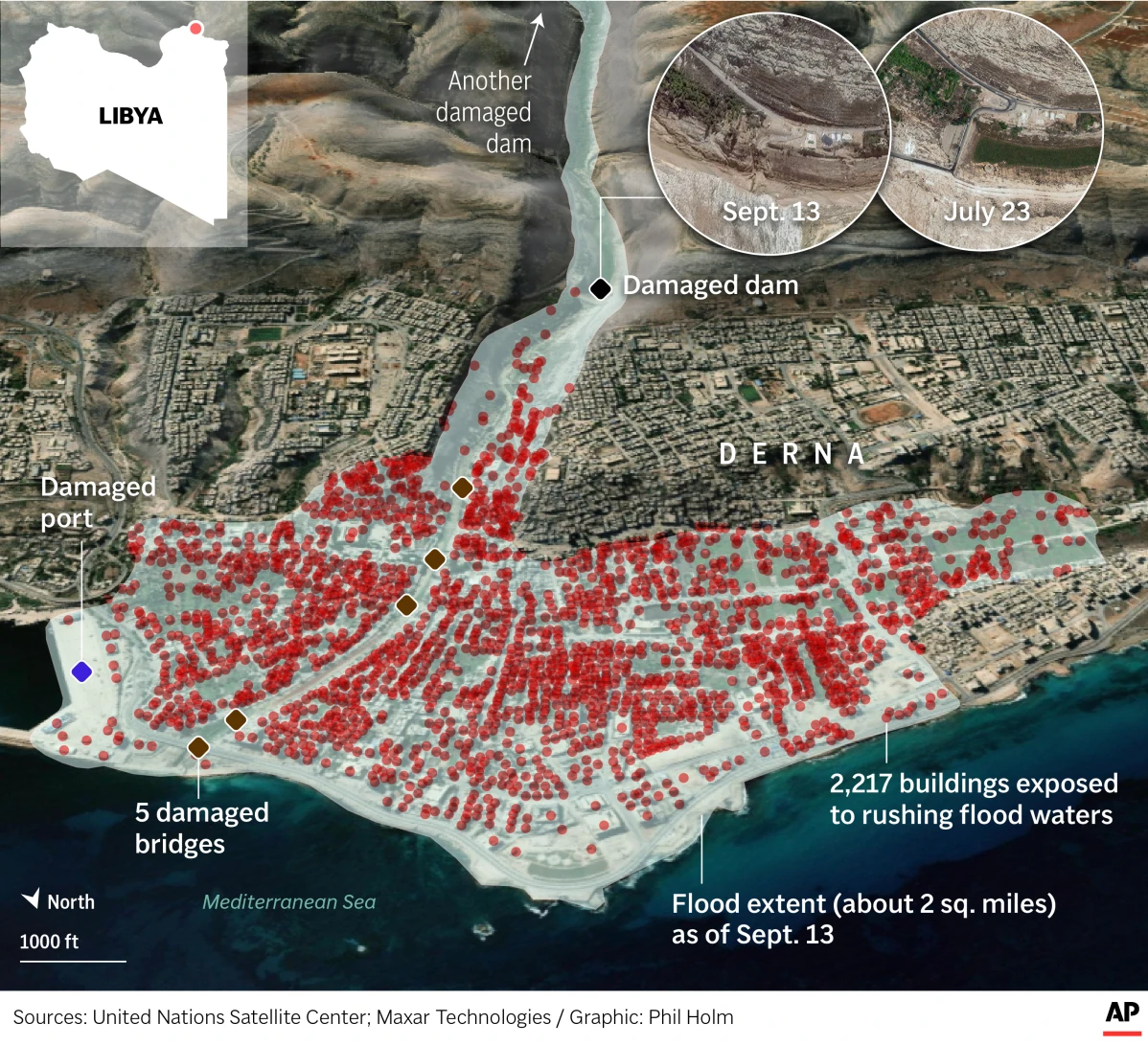

The startling devastation reflected the storm’s intensity, but also Libya’s vulnerability. Oil-rich Libya has been divided between rival governments for most of the past decade — one in the east, the other in the capital, Tripoli — and one result has been the widespread neglect of infrastructure.
The two dams that collapsed outside Derna were built in the 1970s. A report by a state-run audit agency in 2021 said the dams had not been maintained despite the allocation of more than 2 million euros for that purpose in 2012 and 2013.
Libya’s Tripoli-based prime minister, Abdul-Hamid Dbeibah, acknowledged the maintenance issues during a Cabinet meeting Thursday and called on the Public Prosecutor to open an urgent investigation into the dams’ collapse.
The disaster brought a rare moment of unity, as government agencies across the country rushed to help the affected areas.
While the Tobruk-based government of eastern Libya is leading relief efforts, the Tripoli-based western government allocated the equivalent of $412 million for reconstruction in Derna and other eastern towns, and an armed group in Tripoli sent a convoy with humanitarian aid.
Statement from WMO Secretary-General Prof. Petteri Taalas:
"The tragedy in Libya highlights the devastating and cascading consequences of extreme weather on fragile states and shows the need for a multi-hazard early warnings which embrace all levels of government and society.
Libya’s National Meteorological Center did indeed issue early warnings for this extreme weather event, which saw unprecedented rainfall levels (414.1 mm in 24 hours in one station) which caused the flash floods and the collapse of the dams. The warnings were issued for heavy precipitation and floods, but didn’t address the risk posed by the ageing dams.
The fragmentation of the country’s disaster management and disaster response mechanisms, as well as deteriorating infrastructure, exacerbated the enormity of the challenges. The political situation is a driver of risk, as we are seeing in many countries currently.
The National Meteorological Center faces major gaps in its observing systems. Its IT systems are not functioning well and there are chronic staff shortages. The National Meteorological Center is trying to function, but its ability to do so is limited. The entire chain of disaster management and governance is disrupted.
The tragedy highlights the philosophy behind the Early Warnings for All initiative to improve the accuracy and availability of impact-based forecasts, and to ensure that they reach everyone and lead to action.
WMO sends its condolences to the Libyan people. We are committed to working with partners to ensure Early Warnings For All."
Background :
Libya's National Meteorological Centre issued early warnings for this extreme weather event 72 hours before its occurrence, and notified all governmental authorities by e-mails and through media urging them to take more care and caution, and also urging them to take preventive measures. A State of Emergency was announced in the eastern regions based on these warnings.
Libya’s National Meteorological Centre said that the storm reached a peak in northeastern Libya on 10 September, with strong winds of 70 - 80 km/h. This caused communications interruption, the fall of electricity towers and trees. Torrential rains of between 150 - 240 mm caused flash floods in several cities, including Al-Bayda, which recorded the highest daily rainfall rate of 414.1 mm (from 10 Sep 8am to 11 Sep 8am). The National Meteorological Centre said this was a new rainfall record.
Entire neighborhoods in Derna disappeared, along with their residents swept away by water after two ageing dams collapsed making the situation catastrophic and out of control, said the Libyan meteorological service.
++++++++++
That 414 mm of rain is 16 inches!
https://wattsupwiththat.com/2023/09/17/sky-blame-libyan-floods-on-climate-change/
From NOT A LOT OF PEOPLE KNOW THAT
++++++++++
Very human factors contributed to the tragedy in Derna - including two centuries of fossil fuel burning that have driven global warming - yet industry profits appear to have done nothing to help protect people from the increasing risks of climate change in countries like it.
++++++++++++++++
Comments from author at the top: The floods were a direct result of the failure of the two dams up stream of Derna, which were built in the 1970s by a Yugoslavian company (hardly a recipe for success!). Experts say that when the dams broke, 30 million cubic metres of water was released into the city.
Neither dam has had any maintenance for over 20 years.
Before the dams were built, there would only have been minimal flooding of course.
The storm which triggered the collapse was merely a catalyst for a disaster that was waiting to happen, and there is not a single piece of evidence to suggest that climate change had anything to do with it at all.
Instead of printing Clarke’s pack of lies, maybe Sky should have told its viewers the real story